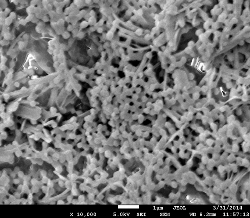Scientia Pharmaceutica 2015, 83 (3), 535-548
DOI: 10.3797/scipharm.1502-01
Complete eradication of HIV-1 infection is impeded by the existence of latent HIV-1 reservoirs in which the integrated HIV-1 provirus is transcriptionally inactive. Activation of HIV-1 transcription requires the viral Tat protein and host cell factors, including protein phosphatase-1 (PP1). We previously developed a library of small compounds that targeted PP1 and identified a compound, SMAPP1, which induced HIV-1 transcription. However, this compound has a limited bioavailability in vivo and may not be able to reach HIV-1-infected cells and induce HIV-1 transcription in patients. We packaged SMAPP1 in polymeric polyethylene glycol polymethyl methacrylate nanoparticles and analyzed its release and the effect on HIV-1 transcription in a cell culture. SMAPP1 was efficiently packaged in the nanoparticles and released during a 120-hr period. Treatment of the HIV-1-infected cells with the SMAPP1-loaded nanoparticles induced HIV-1 transcription. Thus, nanoparticles loaded with HIV-1-targeting compounds might be useful for future anti-HIV-1 therapeutics.

